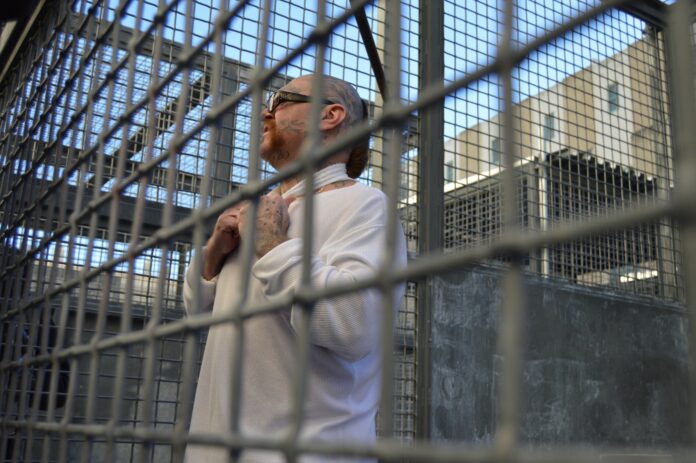Following Gov. Gavin Newsom’s moratorium on capital punishment via executive fiat in March, will California voters end the death penalty in 2020? New research from the National Institute on Money in Politics indicates that, absent a robust grassroots anti-death penalty effort, it may be a tough sell.
That’s owing to the power and influence of statewide unions such as the California Correctional Peace Officers Association, whose small-donor efforts in 2016 helped turn the tables on a capital-punishment proposition twofer on that ballot that year.
Proposition 62 would have ended the death penalty outright; while pro-death penalty Proposition 66 sought to limit appeals in capital cases.
The institute’s research found that even as the state was trending away from support for the death penalty, that pro–death penalty, 62/66-specific committees outspent opponents’ committees by $13.5 million to $9.7 million in 2016
That year, “corrections officers represented the overwhelming majority of small donors rallying behind the death penalty,” reports the institute’s online research portal, followthemoney.com, adding that “thirty-five public sector unions collectively gave $3.3 million to the pro-death-penalty effort. . . . Almost almost half ($1.6 million) of the union total came from contributions from CCPOA and the Peace Officers Research Association of California.” Twenty-eight-thousand CCPOA members contributed $287 each to 62/66-specific committees.
Small-donor anti-death penalty contributions were not nearly so robust, as the institute reports that “more than four-fifths of the anti-death-penalty total ($7.9 million) came from just 35 donors that gave $50,000 or more.”
Contributions from opponents were made by George Soros’s Open Society Policy Center ($1 million), Laurene Powell Jobs’s Emerson Collective ($600,000), “and more than $450,000 from the Northern California Chapter of the American Civil Liberties Union.”
The report further noted that Stanford professor Nick McKeown gave $1.5 million, “a 91 percent share of the total from education donors,” while Netflix co-founder and CEO Reed Hastings contributed $1 million of $1.2 million that came from the TV and film industry. Lastly, it found that five people (including Tom Steyer) “accounted for more than 80 percent of $1.1 million from securities and investment donors.”
Small-donor contributions from 1,700 opponents totaled $377,000, reports the institute as it recounted the run-up to the 2016 election. That year, opponents contributed an average of $4,750 to the committees; proponents of the death penalty contributed an average of $470.
On September 21 2016, the Sacramento Bee reported that polling to date indicated that a plurality of voters supported Prop 62, while only a third of voters supported Prop 66.
It cited a joint study from the Field Poll and the Institute of Governmental Studies at UC Berkeley, that “found Proposition 62 ahead 48 to 37 percent, with 15 percent of likely voters undecided. Meanwhile, barely a third (35 percent) support Proposition 66, a competing initiative aimed at expediting the death-penalty process. With 42 percent undecided, it appears far less familiar to voters. Twenty-three percent are opposed.”
Then came a CCPOA-led advertising blitz that raised public awareness of Proposition 66. “In the end, 53 percent of voters rejected Proposition 62 and 51 percent okayed Proposition 66,” notes the institute.
In making his announcement this spring, Newsom highlighted that the death penalty discriminates against minorities and poor people as he called the practice “ineffective, irreversible and immoral.” He pledged to give a reprieve to the 737 inmates currently on death row in California, close the death chamber at San Quentin (it was dismantled soon after his announcement), and end a years-long debate over the state’s execution protocols.
Most of the 737 condemned in California are men held in one of three death row tiers at San Quentin. Women on death row are incarcerated at a facility in Chowchilla. The last execution in California took place 13 years ago.
As Newsom was making his announcement, Marin Assemblyman Marc Levine introduced a proposed constitutional amendment on the 2020 ballot that would ban the death penalty.
Opponents to Newsom’s moratorium have already ramped up the grassroots activism in light of the renewed push to end capital punishment in the state.
Families of crime victims and local district attorneys have embarked on a “Victims of Murder Justice Tour” which today is in Riverside. In April NBC Los Angeles reported that the organization (founded by the Orange County District Attorney Todd Spitzer) would take the tour to each of the 80 Assembly and 40 Senate districts in the state.
Death Penalty Action, a California non-profit devoted to ending capital punishment in the state through public education and grassroots organizing, was unsurprisingly supportive of Newsom’s March move.
District attorneys and victims’ families have accused Newsom of thwarting the 2016 will of the voters, but recent polling suggests that Californians favor life-without-parole over execution in first-degree murder cases, by a two-to-one ratio.
A Public Policy Institute of California poll conducted two weeks after Newsom’s announcement found that 62 percent of voters “chose life in prison over the death penalty,” reported Death Penalty Action.”The survey found that only 31 percent of adults—38 percent of whom are likely voters—favored the death penalty.”











